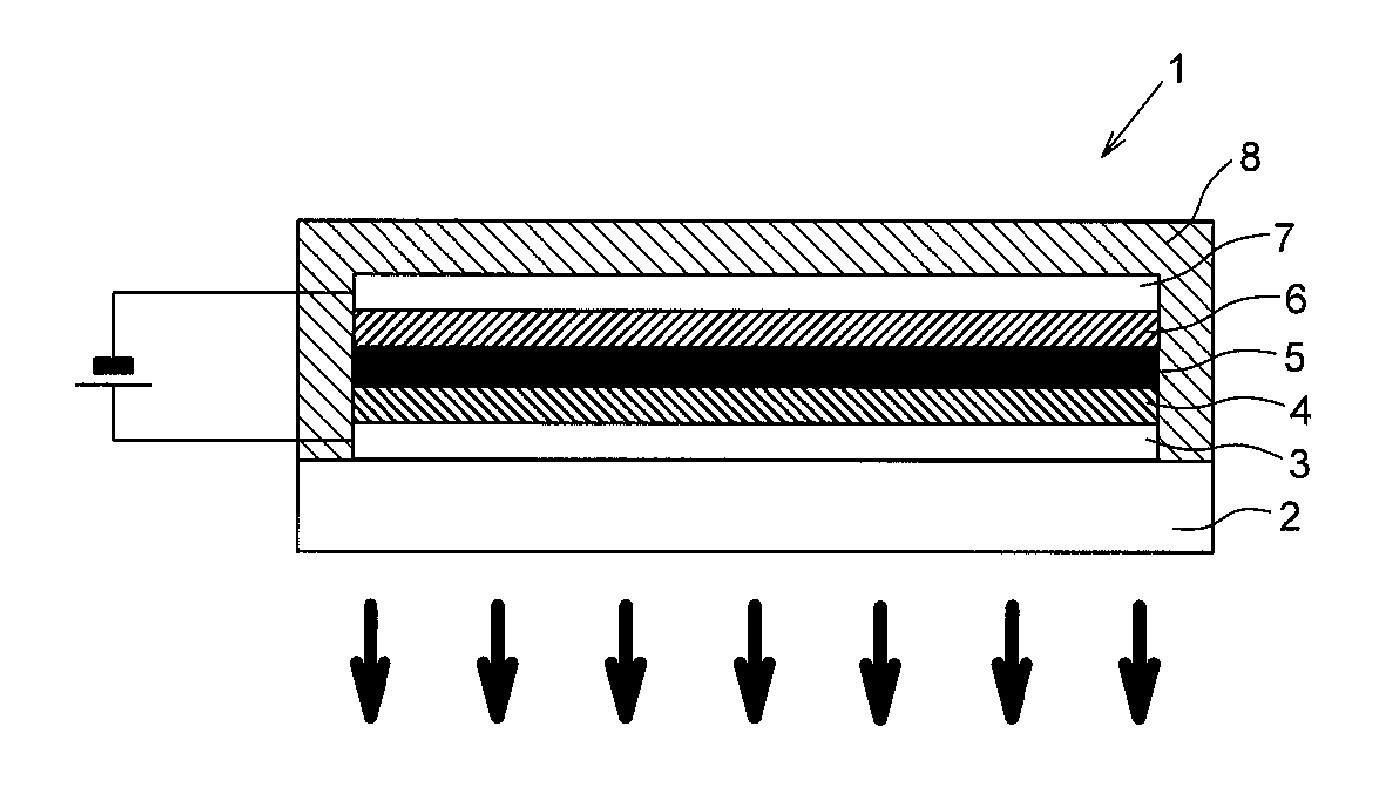Organic electroluminescent element and novel alcohol-soluble phosphorescent material
a technology of organic electroluminescent elements and phosphorescent materials, which is applied in the direction of organic chemistry, organic semiconductor devices, thermoelectric devices, etc., can solve the problems of different solubility of lamination, reduce productivity, etc., and achieve excellent electron-injection properties, durability and luminescent efficiency, and high quantum yield.
- Summary
- Abstract
- Description
- Claims
- Application Information
AI Technical Summary
Benefits of technology
Problems solved by technology
Method used
Image
Examples
examples
[0129]Hereinafter, the examples for confirming the effect of the present invention will be described.
(1) Synthesis of Host Materials
[0130]Among the host materials used (phosphine oxide derivatives: represented by Formula A to Q shown above), what are described in PCT Gazett WO 2005 / 104628 were synthesized according to the described method in the Gazett.
(2) Synthesis of Guest Material
[I] Synthesis of [bis(2-phenylpyridinato-N,C2′)-mono(2-(4-diphenylphosphoryl) pyridinato-N,C2′)]iridium (III) (Ir(ppy)2(pdppy))
(I-1) Synthesis of 4-bromophenyldiphenylphosphine oxide (pBrdppo)
[0131]
[0132]To 2.16 g (88.9 mmol) of magnesium, 5 mL of THF was added, then a THF solution of 22 g of 1,4-dibromobenzene (93.2 mmol) was added dropwise at 0° C. The mixture was stirred until all magnesium was consumed, then 40 mL of THF was added and the mixture was stirred for 1 hour. The mixture was cooled to 0° C. and 15.7 mL of diphenylphosphoryl chloride (84.5 mmol) was added dropwise. The mixture was stirred o...
PUM
| Property | Measurement | Unit |
|---|---|---|
| Fraction | aaaaa | aaaaa |
| Fraction | aaaaa | aaaaa |
| Fraction | aaaaa | aaaaa |
Abstract
Description
Claims
Application Information
 Login to View More
Login to View More - R&D
- Intellectual Property
- Life Sciences
- Materials
- Tech Scout
- Unparalleled Data Quality
- Higher Quality Content
- 60% Fewer Hallucinations
Browse by: Latest US Patents, China's latest patents, Technical Efficacy Thesaurus, Application Domain, Technology Topic, Popular Technical Reports.
© 2025 PatSnap. All rights reserved.Legal|Privacy policy|Modern Slavery Act Transparency Statement|Sitemap|About US| Contact US: help@patsnap.com



